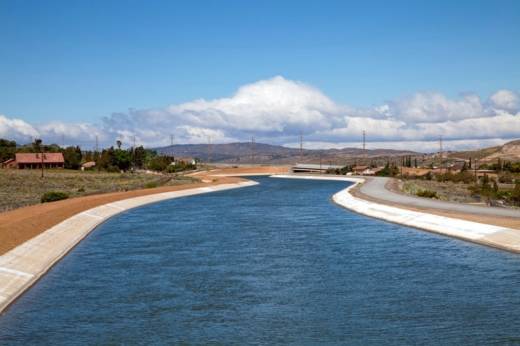I don’t believe there’s been a synthesis of climate change specific to the Delta, though. So in that sense, this is new. It’s a more definitive look at climate change in the Delta than we’ve had before. We were really trying to set the stage for how we think about restoration in the Delta, and at the same time be as comprehensive as possible.
Water Deeply: What is your sea level rise projection in this report?Melcer: There is nearly a 70 percent chance that by 2100 we’re going to see 2.4ft of sea level rise at the Golden Gate Bridge. That’s with a low-emissions scenario, which is based on the Paris climate agreement. So if we were to do some significant work, it would take really relying on the best available technology, doing carbon sequestration and coupling that with a zero-emissions way of living. The way we operate on the planet would fundamentally change. It’s pretty optimistic to think that we’ll get there. But that’s what the Paris agreement calls for.
The high emissions scenario is more akin to the trajectory that we’re on at this point. That’s sort of a business as usual scenario. So if we don’t do anything, that’s where we’re headed. That shows 3.4ft of sea level rise by 2100.
Water Deeply: Will the Delta see the same magnitude of sea level rise as the Golden Gate?
Melcer: Depending on where you are, it will be less than these maximum numbers. But there are some interesting interactions that happen as land elevation changes and the forces of streamflow come in to meet with the tidal waters. That actually drives the water surface elevation up a little bit in localized areas.
Currently we’re working on engaging some technical expertise to do a climate vulnerability assessment within the Delta. This is a key question we would be looking to answer: What do water surface elevations look like within the Delta? We’ll be identifying assets and vulnerabilities.
Water Deeply: How will water flows change through the estuary?
Melcer: There is not universal agreement on the total amount of precipitation we would expect. But the big takeaways are that we expect to see higher streamflow due to rainfall in the winter across all the models. That ties back to atmospheric temperature, ocean temperature, warmer storms coming onboard. And on average, the peak of runoff would shift by one month earlier in the season.
Water Deeply: What sort of management issues does this raise?
Melcer: The system is really predicated on a large snowpack that slowly feeds the reservoirs and river systems. So if we see shifts in runoff, that system starts to require changes in how we operate reservoirs. And that then has downstream impacts on our ability to provide for water supply and water quality management. There’s this cascading effect across all the functions that we rely on our reservoir systems for.
Water Deeply: What are the potential downstream effects?Melcer: The Department of Water Resources has done some interesting modeling that shows the effects of just an increase in the frequency and magnitude of flood flows. There’s also an expectation that the occurrence of atmospheric rivers will increase. So on average, we expect flood volumes to increase 60–80 percent on the San Joaquin River, and 10–20 percent on the Sacramento River. That has to do with elevations of the mountain ranges in those different basins.
These are significant increases in the amount of water that’s flowing across the landscape during a flood event. Whereas, historically we would see some of that contributing to snowpack and then being released slowly through the melting process later in the year.
For some San Joaquin basin streams, we expect to see more than a 50 percent increase in 100-year flood events. That’s a massive increase in risk. We have an opportunity to start to figure out what that means, what our flood management infrastructure should look like, with some of the modeling work that’s come out. We should be thinking about what we need on the landscape to pass that magnitude of water.
Water Deeply: How will salinity change in the estuary?
Melcer: There are a couple of implications. An increase in water surface elevation increases the amount of salt water that makes its way into the Delta. We really focus on the implications for habitat, for fish species. That mixing point between freshwater and salt water is really important for the aquatic ecosystem.
If we are to continue to manage water quality in the Delta with reservoirs, it really is going to require increased reservoir releases to counter that influx of salinity. Some studies have shown that, with 1ft of sea level rise, it would require almost 500,000 acre-feet of additional Delta outflow, generally in the form of reservoir releases, to meet salinity requirements as they stand at this point.
Water Deeply: That sounds like a lot of additional pressure on the state’s water system.
Melcer: It starts to paint a picture where we’re having difficulty meeting all of those objectives. The implications of increasing streamflow in winter and less runoff later in the year leave us with reservoirs that are not full, and then we’re unable to really use managed flows to deal with things like salinity intrusion in the Delta.
We release flow at certain times of year to protect fish and their spawning activities. Supporting these fish becomes really difficult in these future scenarios where that flexibility continues to be reduced by dynamics of precipitation, sea level rise and salinity intrusion.

